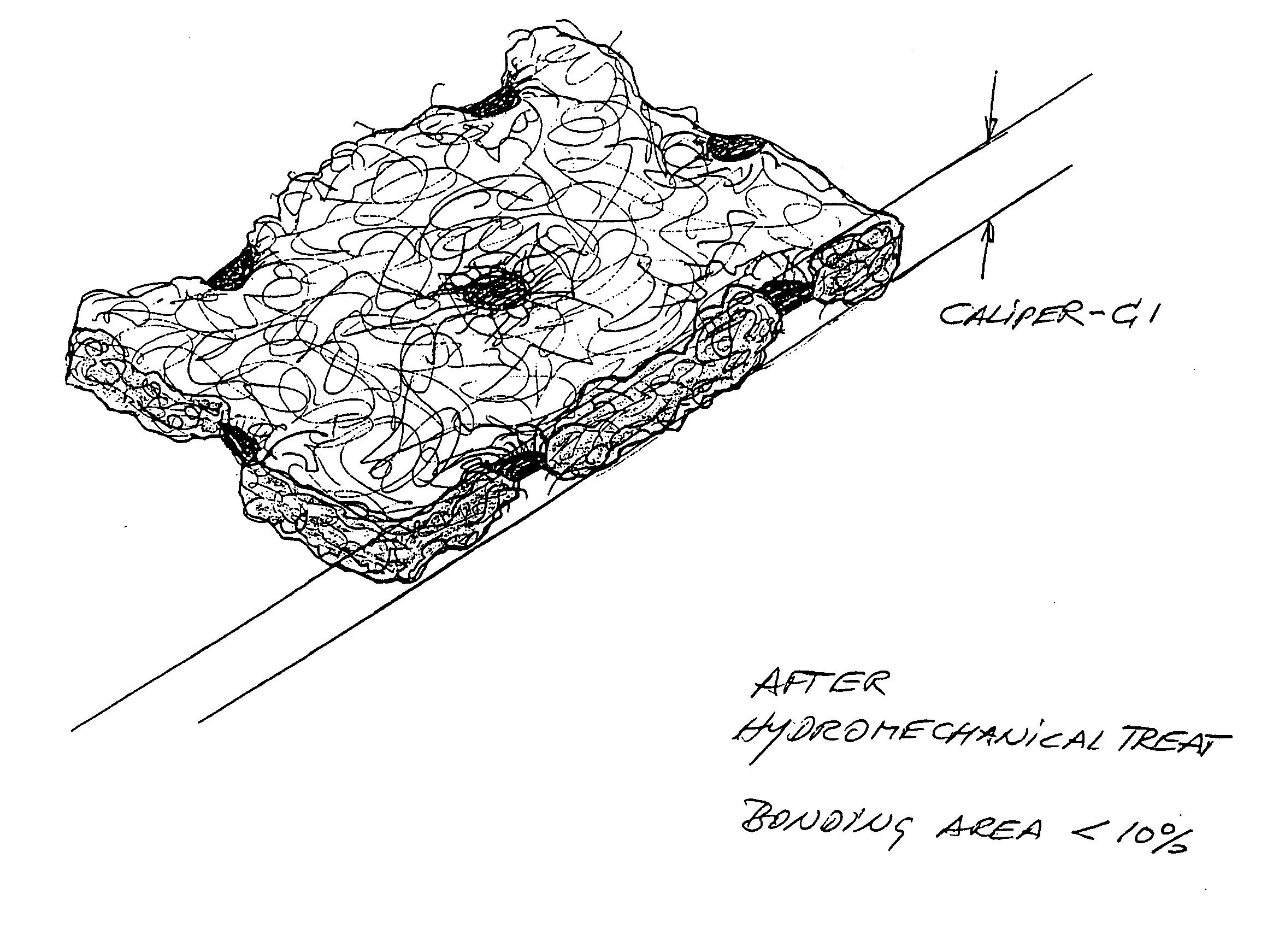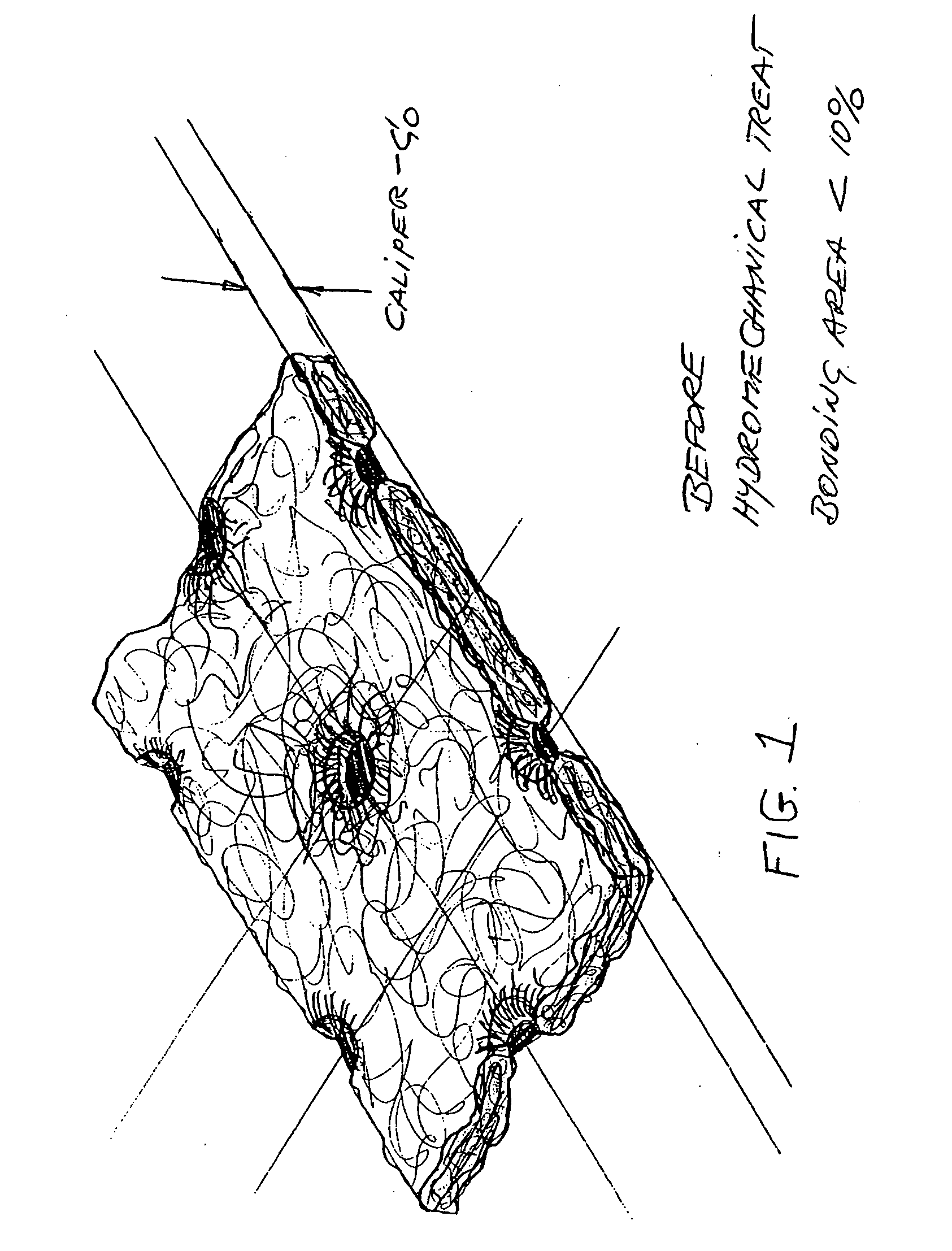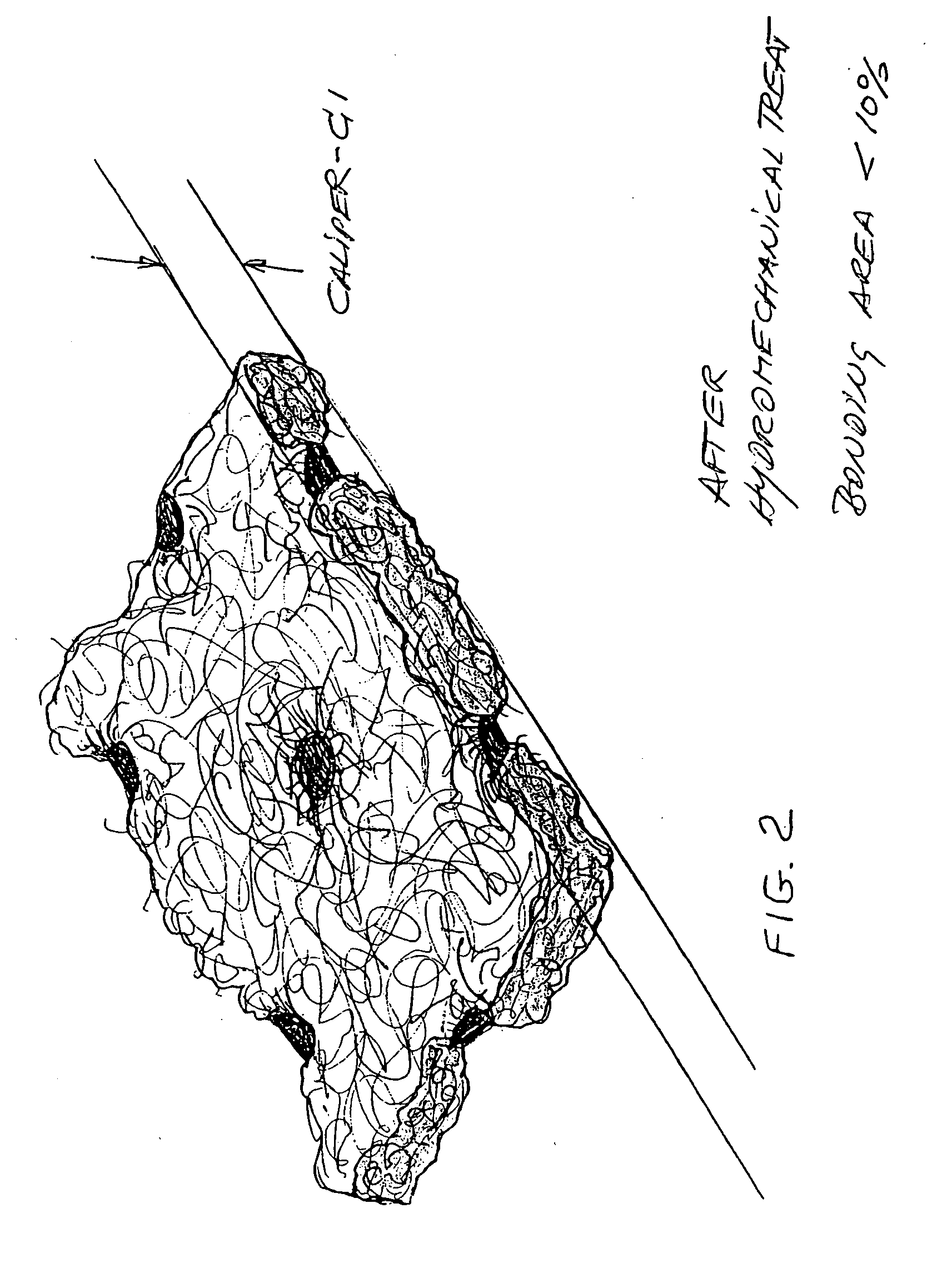Hydroengorged spunmelt nonwovens
a technology of spunmelt and nonwovens, applied in the field of spunmelt nonwovens, can solve the problems of reducing the integrity and tensile strength of spunmelt, affecting the quality of the finished product, and exhibiting only a limited level of integrity after hydroentanglement, so as to achieve the effect of increasing the condrapability of the finished produ
- Summary
- Abstract
- Description
- Claims
- Application Information
AI Technical Summary
Benefits of technology
Problems solved by technology
Method used
Image
Examples
example
[0062] Three samples of a polypropylene spunbond nonwoven were obtained, each having a basis weight of about 18.0 g / m2. Samples A, B and C are available from First Quality Nonwovens, Inc. under the trade names 18 GSM SB HYDROPHOBIC for Samples A and B and 18 GSM PB-SB HYDROPHOBIC for Sample C. Samples A and B had a standard isotropic bonding pattern called “oval pattern.” Sample C had an anisotropic bonding pattern which was also orthogonally differential. Each of the samples had fusion bonds of identical dimensions and configuration, each sample having a percentage bond area of about 18.5%.
[0063] Each of the samples was passed at a travel speed of 400 meters / minute through a hydroengorgement operation which provided hydromechanical impact through the use of water jets with medium hydraulic pressure on each of the two nonwoven surfaces. The water orifices were arranged in a single row on each side of the nonwoven, the single row extending across the width of the nonwoven Each row h...
PUM
| Property | Measurement | Unit |
|---|---|---|
| Fraction | aaaaa | aaaaa |
| Fraction | aaaaa | aaaaa |
| Fraction | aaaaa | aaaaa |
Abstract
Description
Claims
Application Information
 Login to View More
Login to View More - R&D
- Intellectual Property
- Life Sciences
- Materials
- Tech Scout
- Unparalleled Data Quality
- Higher Quality Content
- 60% Fewer Hallucinations
Browse by: Latest US Patents, China's latest patents, Technical Efficacy Thesaurus, Application Domain, Technology Topic, Popular Technical Reports.
© 2025 PatSnap. All rights reserved.Legal|Privacy policy|Modern Slavery Act Transparency Statement|Sitemap|About US| Contact US: help@patsnap.com



